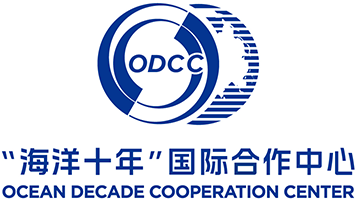

As early as more than 600 years ago, with Fujian tea and others, Zheng He had repeatedly set out his voyages from Changle to the western countries, including countries and regions along the “Belt and Road”,
In the Two Sessions of Fujian Province, it is made clear again that Fujian will accelerate the core area construction of the "21st Century Maritime Silk Road" and build "The Belt and Road" access to Tea Town.
Fujian is the Origin of oolong tea and the birthplace of tea culture. Guo Li, an associate researcher at the Fujian Academy of Social Sciences, said that Souchong black tea in Ming Dynasty went aboard from Chongan Tongmuguan in Fujian (Today's Mount Wuyi), opened a new era of Chinese black tea. By the 18th century, tea had become popular in Europe, opened a four-hundred-year legendary fashion in European palace nobles and civilians.
At present, Chinese Government is promoting "The Belt and Road" construction. Fujian, as the core area of the "21st Century Maritime Silk Road", is planning to awaken the memory of "Maritime Silk Road", and promote current famous teas like Dahongpao, Anxi Tieguanyin, etc., to the world.
Professor Xia Liangyu, a tea expert and the Party Secretary of Ningde Normal University thinks that Fujian tea enterprises and related practitioners will once again meet unprecedented opportunities in exporting teas to “The Belt and Road” countries.
He said that “The Belt and Road” countries and regions are the most important tea production and consumption areas in the world, with huge market potential, are the breakthrough in reshaping the new supply of tea industry.
In fact, Fujian enterprises with courage and ability had already practiced.
Last March, enterprises of Fujian Anxi with Italian enterprises jointly built a 30,000 mu EU standard tea garden in Anxi, Fujian Province. Meanwhile, Chunlun tea produced in Fuzhou city setted up sales points in Russia, France, Switzerland, etc. Zou Famiy in Mei Village, whose ancestors used to sell the Mount Wuyi tea to Russia and other countries, had restarted their tea business. Zouqin, the 29th generation of the Zou's family, had returned to his hometown and set up an e-commerce platform; follows the footsteps of his forefathers to promote Fujian teas to go out.
Currently, Fujian teas has been exported to Vietnam, Japan and other 56 countries and regions, and build close trade relationships with The Belt and Road countries. According to statistics from the Fujian Entry-Exit Inspection and Quarantine Bureau, Fujian totally inspected 2107 batches exported tea in 2016, with a value of 0.2 billion U.S. dollars, respectively increased by 6.63% and 20.81% compared with last year, and hits a new record.
Anxi is the origin of Tieguanyin. Gao Xiangrong, County Party Secretary of Anxi, said that Anxi will support tea enterprises to set up marketing centers or stores in Southeast Asia, attend related activities like China-ASEAN Commodity Fair, “Fujian Tea Maritime Silk Road”, etc., carry out cultural exchange and mutual visits to expand the depth and breadth of tea business cooperation.
There is no doubt that building The Belt and Road tea country channel will not only benefit the tea industry, but will also further promote the foreign cooperation of Fujian.
Xia Liangyu believes that as long as Mountain Wuyi in northern Fujian, Anxi in southern Fujian, and Fuding in East Fujian restart the development of tea industry, local tourism, culture, economy and trade will also meet new opportunities,
Giovanni Fontana, former agriculture minister of Italy, also believes that using tea as a medium to relive the culture of the ancient “Maritime Silk Road” and tell the story of Chinese tea will help to promote the interconnection between China and The Belt and Road countries and regions
Reported by China News, January 22, 2017
Fujian Awaken “Maritime Silk Road” Memory, Build “The Belt and Road” Access to Tea Town